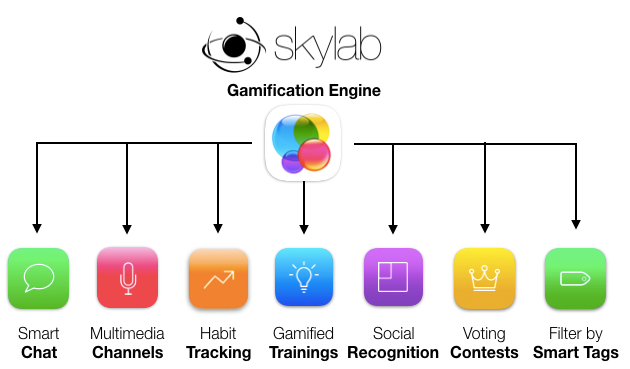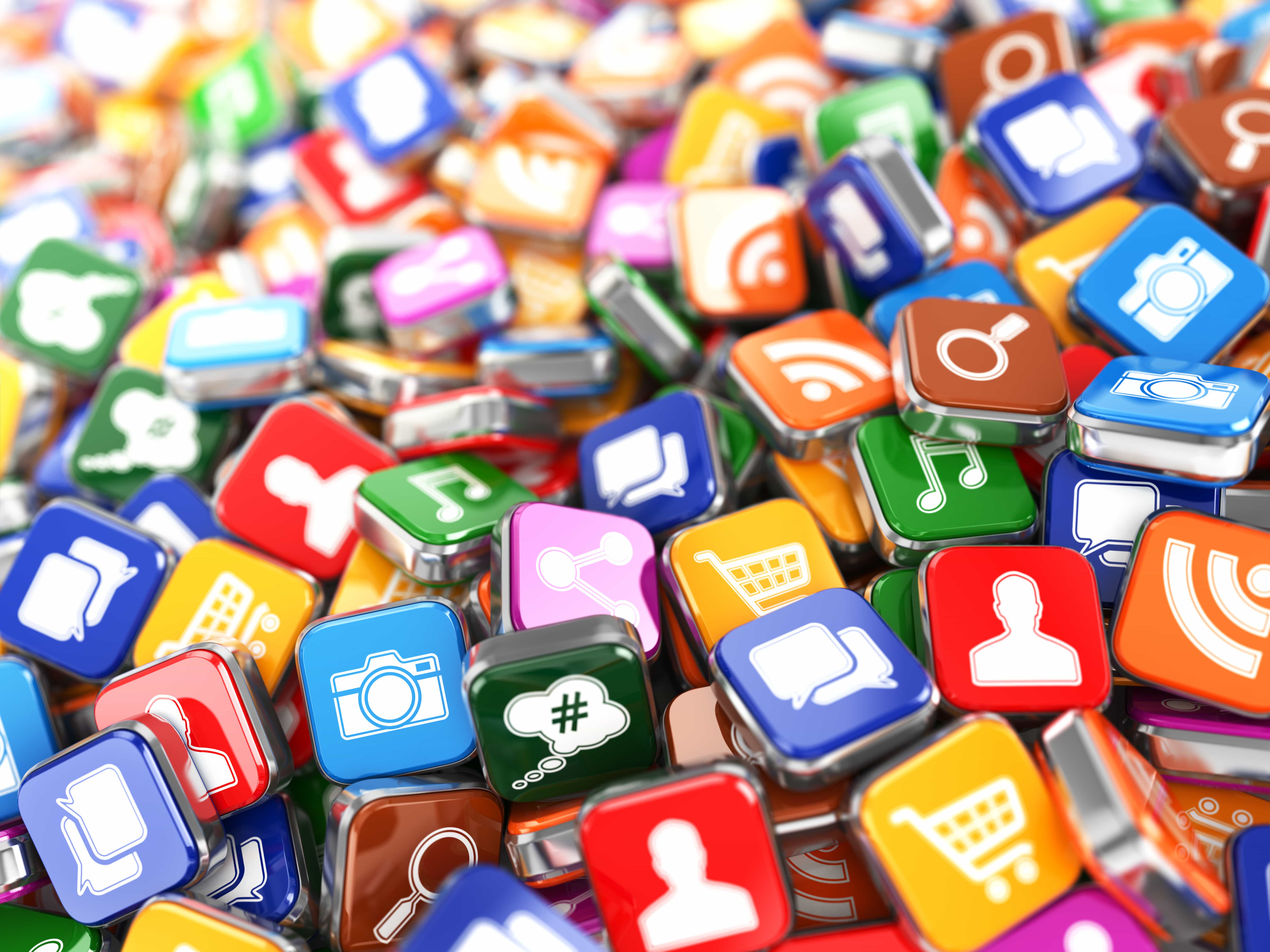
Gamification in the Workplace
Gamification in the Workplace
Gamification in the workplace uses game mechanics to drive employee performance. Employee performance KPIs (Key Performance Indicator) are measured in real time – like a Fitbit for work – showing where employees are doing better, having them compete with their goals and past achievements. It is made to drive intrinsic motivation, the sense of mastery and control that comes when we know we are doing our job well.
Yet, most people think of workforce gamification as a thin game veneer applied to work, a “video game at work” that attempts to create motivation through points and badges, bells and whistles. And then, almost immediately, they disbelieve gamification. They are right – making work cute or “fun” or “game-like” doesn’t work, but using gamification like a fitness tracker for work works well, changing more than performance and affecting the culture of thinking and talking about employee performance.
“When brought into the context of business, this means that users of these applications are actively engaged in fun ways with other users who they can interact with through chat and messages, all while learning about a given company and their products.”
Dean Grey, Founder and CEO of Skylab Apps.
At Skylab Apps, we use our own app to gamify the way people working with us.
Here are five key elements of what workforce gamification really is:
1. Real-Time Performance Management
Performance management is a good idea: set goals and measure their achievement. The problem is that most performance management practices involve setting of annual goals, which soon become stale. In addition, communication with employees about performance is marred by the practice of ranking employee performance – which people (naturally, of course) find threatening, confrontational and discouraging.
So in practice, many companies are eliminating or re-assessing their performance management practices.
Gamification focuses on the here and now. Imagine a basketball coach who skids along the court, following his team as they invest all their body strength and skills to fight off opponents’ scores, and keep up their offensive within the team. The coach throws out his feedback in real-time so his players can fix their mistakes on the spot. If his point guard is taking too many shots in the first quarter, his coach will have him back on the right track by the end of the second.
Gamification brings this dynamic to your employees’ performance. Feedback is given on-the-spot, by showing performance KPIs and personalized benchmarks and goals within the gamification application, so employees can rectify flaws in real-time, instead of thru retroactive feedback that is weeks or months late.
2. Objective and Fair
New management practices are gravitating away from subjective evaluation of employees, and more in the direction of objective and proactive development of employees.
What this brings is a positive process that reflects both to employees and their managers how employees are progressing and which goals are being met, and transparently so. Research about performance management shows that managers are often unaware of the fact that their evaluations are subjective; measuring KPIs in real time can correct this. In this case, there are spillover effects into corporate culture – when evaluation is objective and fair, people feel differently about work and about whether their efforts and performance will be fairly recognized.
Gamification also reflects insights and results to employees (and managers) that effectively enable them to make changes in their work performance. In many cases, in case performance in a certain area is lacking, employees are directed to micro-learning so that they can correct their course and improve their expertise. For example, a new Urbn Pizza’s worker will be motivated to learn about the company he will works for!
A Skylab’s Client, Urbn Pizza, integrates the gamification in the workplace by using this performance process.
3. Performance Measurement is Transparent
Many successful tech companies (Google, Intel, Linkedin and others) use OKRs (Objectives and Key Results) to communicate goals and objectives to employees. Results are tracked – and people can see the OKRs of their peers. This is a new degree of transparency.
OKRs are used by knowledge workers (product managers, developers, communications managers, etc.), and remain transparent to all their peers, so that every employee in the organization can see what every other employee is working on and setting as a priority.
Gamification is OKR for the workforce: rank and file employees, who don’t have goals like ‘launch new product’, ‘have a successful beta launch’ but are required to perform within certain benchmarks expected of them.
 It lets the relevant employee to see how they are doing in comparison to their fellow colleagues, and in what fields they are performing better or worse than those colleagues. This instills a sense of fairness, and a clarity on what employees are supposed to focus on at work. It also lets companies set individualized goals, so that what is expected of employees is fair and achievable.
It lets the relevant employee to see how they are doing in comparison to their fellow colleagues, and in what fields they are performing better or worse than those colleagues. This instills a sense of fairness, and a clarity on what employees are supposed to focus on at work. It also lets companies set individualized goals, so that what is expected of employees is fair and achievable.
For example, on this screenshot of the Urbn Pizza app, an employee of one of the Urbn Pizza restaurant can go through a “Prep List” with actions like “Check Bathrooms” or “Check Kitchen”. These actions are proper to the employee experience. Here, it’s the server experience but others exist like Bartender or Cooks. Once the Actions are applied, they are displayed on the Community Recognition Wall. Every other employees and managers in the workplace will be able to see that actions had been taken. If one has been forgotten, another worker can comment the action and the problem is fixed instantly thanks to instant feedback.
4. Drive the Right Things: Behaviour
Competition is often viewed as a positive motivation method. Well, for many people it isn’t and can even be perceived as a source of unfairness. Sales managers tend to believe in this fallacy and want to mana ge performance with leaderboards displayed as “employees of the day” on the Urbn Pizza app.
ge performance with leaderboards displayed as “employees of the day” on the Urbn Pizza app.
Projecting different employee’s successes to one another on mediums like a leaderboard and showing actual sales isn’t a good idea. It’s true that sales are the objective, yet this isn’t what should be motivated, but rather the activities that drive sales. To generate better sales, gamification would want to drive behaviours and measure them: more calls, qualifying leads, meeting potential and existing clients, etc.
5. Gamification Isn’t a Game
What is the “game” part of gamification? It is the use of game mechanics – like calling out to employees to bet on themselves, showing them completion bars and more – to drive behaviour and engagement. Gamification creates a way for employees to monitor their progress at the workplace and act from a place of intrinsic motivation. In this, it isn’t a game, but it can be a game changer for work performance and culture.








 The idea is quite revolutionary. Skylab Apps has really built a platform, not an app. Uber is an app, you download it, use it and when the company updates it, you may see some changes. The Skylab Apps Platform is not Web based or HTML 5. The platform is built to work simultaneously across three platforms:
The idea is quite revolutionary. Skylab Apps has really built a platform, not an app. Uber is an app, you download it, use it and when the company updates it, you may see some changes. The Skylab Apps Platform is not Web based or HTML 5. The platform is built to work simultaneously across three platforms: “Skylab has revolutionized the rapidly growing cheerleading industry by providing cheerleaders, coaches, and gym owners the best opportunity to train, learn, and develop their skill-set as they strive to become world class athletes. By utilizing the Skylab platform, we are now able to use gamification to connect a global industry, and the result is extraordinary.”
“Skylab has revolutionized the rapidly growing cheerleading industry by providing cheerleaders, coaches, and gym owners the best opportunity to train, learn, and develop their skill-set as they strive to become world class athletes. By utilizing the Skylab platform, we are now able to use gamification to connect a global industry, and the result is extraordinary.” Big companies are catching on too! Skylab Apps has a growing list of some major clients including
Big companies are catching on too! Skylab Apps has a growing list of some major clients including  “Skylab Apps technology gives me the platform to engage with my community through chat, trainings, and recognition all while giving my community a place that isn’t bombarded with traditional social media noise.”
“Skylab Apps technology gives me the platform to engage with my community through chat, trainings, and recognition all while giving my community a place that isn’t bombarded with traditional social media noise.” Here is some Quick History For you:
Here is some Quick History For you: